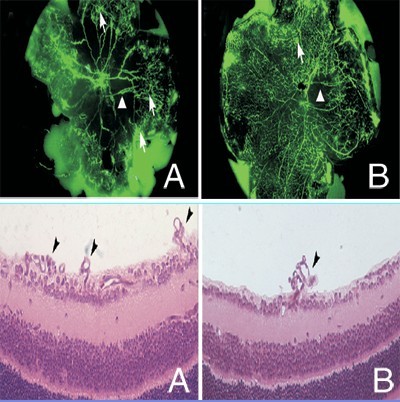 PDF(1095 KB)
PDF(1095 KB)


HIF-1α干扰RNA抑制早产儿视网膜病小鼠模型视网膜新生血管形成的研究
许惠卓,刘双珍,熊思齐,夏晓波
中国当代儿科杂志 ›› 2011, Vol. 13 ›› Issue (8) : 680-683.
 PDF(1095 KB)
PDF(1095 KB)
 PDF(1095 KB)
PDF(1095 KB)
HIF-1α干扰RNA抑制早产儿视网膜病小鼠模型视网膜新生血管形成的研究
HIF-1α siRNA reduces retinal neovascularization in a mouse model of retinopathy of prematurity

缺氧诱导因子1α / 早产儿视网膜病变 / RNA干扰 / 视网膜新生血管 / 小鼠
Hypoxia inducible factor-1α / RNA interference / Retinopathy of prematurity / Retinal neovascularization / Mice